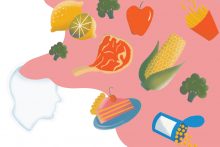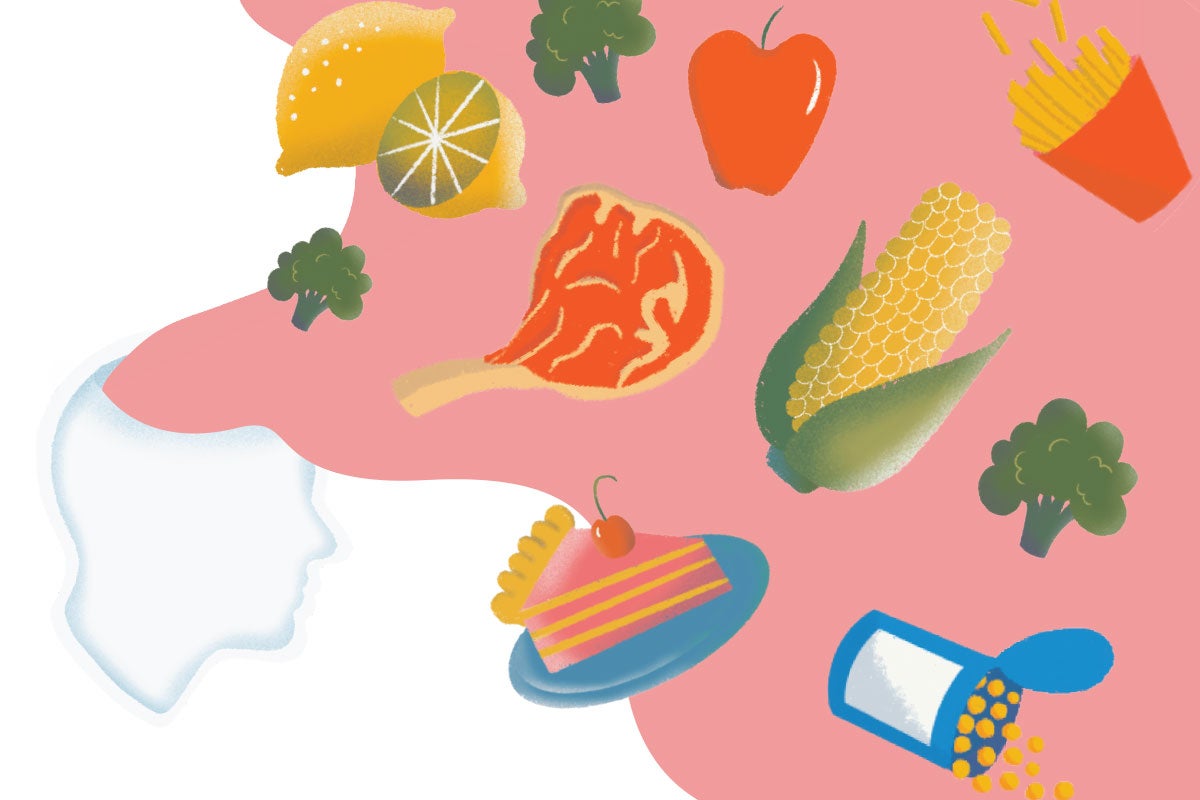
In December of 2021, associate lecturer Leslee D’Amato-Kubiet ’13PhD of the College of Nursing hiked Pine Mountain with her sister in Georgia’s F.D. Roosevelt State Park. Her sister, close in age to D’Amato-Kubiet, walked up the rocky terrain with ease, while D’Amato-Kubiet struggled to keep up.
“If you want to live long, Leslee, you’re going to have to do something about this,” her sister said to her. “You’re going to have to make a change.”
For D’Amato-Kubiet, who at the time was medically morbidly obese, that hike was the beginning of a new relationship with diet and exercise. She’d always taken an interest in understanding how culture influences our food choices — something that comes naturally to the second-generation Italian American — and has researched nutrition literacy among families, and how genetics interact with our food choices.
But even researchers can struggle with weight, and after her sister’s tough love talk, she adopted what’s known as an ancestral diet. The philosophy behind the diet is simple: “If it wasn’t on George Washington’s plate, I don’t eat it,” says D’Amato-Kubiet.
An ancestral diet means eating similarly to how our ancestors ate — primarily by not eating processed foods, which dominate our current industrialized culture. Natural, locally grown, seasonal whole foods make up the ancestral diet, and since adopting it, D’Amato-Kubiet is down 55 pounds. She aspires to lose another 50.
Her skin is brighter, clothes fit her better, and overall, she feels more physically fit. But something else came as a result of her new diet: She thinks more clearly and sleeps better — mental benefits that aren’t as commonly talked about when it comes to diet and nutrition.
A human brain is like the engine of a sports car — when fed the right nutrients and in the right doses, it can take us from zero to 60 with ease and efficiency.
Just as food is the fuel our bodies need to build muscle and grow strong bones, it also provides our brains with the nutrients it needs to function. A human brain is like the engine of a sports car — when fed the right nutrients and in the right doses, it can take us from zero to 60 with ease and efficiency. The good news: It doesn’t always take drastic dietary changes to reap the mental benefits of food. Even small changes — like swapping a bag of chips for an apple — can make a difference.
Going Back to Our Roots
Those who work 9-to-5 jobs can relate: You forgot to pack food the night before, so you head to the nearest fast-food restaurant for a quick, convenient lunch. The cheeseburger, salty French fries and fizzy soda taste so good in the moment, but an hour later, you feel sluggish while sitting at your desk. It’s hard to imagine mustering up enough mental energy to make it through the rest of the workday, so you reach for a cup of coffee to give yourself a boost.
“It’s like [processed food] has put your brain in a coma,” says D’Amato-Kubiet. “Your brain doesn’t know what to do with that processed stuff. That food [doesn’t have] good nutrients.”
The reason why processed foods often make us feel bad goes back thousands of years to the beginning of human history. Our bodies evolved when only whole foods — meaning food that has not been processed, refined or altered with added ingredients — were what was available to humans. It wasn’t until the Industrial Revolution that mass-produced food — and the added ingredients that came along with that — became a staple of diets. Trans fat, for instance, was created by a chemist and first introduced into diets in 1911 as vegetable shortening, and later in margarine, baked goods and fried food.
“Nature doesn’t make bad fat. When we process it [through industrialized means], that’s when it turns bad.”
“Nature doesn’t make bad fat,” says D’Amato-Kubiet. “When we process it [through industrialized means], that’s when it turns bad.”
The human process of turning food into mental and physical energy begins before food even hits our tongues; it starts with our sense of sight.
“You eat with your eyes first,” says D’Amato-Kubiet, adding that when you see something appetizing, the cerebrum and cerebellum in the brain start to light up.
Once food makes its way down the esophagus and into the stomach, the brain receives a signal: Be ready to process what’s coming. Food gets broken down into nutrients while in the small intestine, and then those nutrients get absorbed into the bloodstream and filtered again in the liver. From there, the brain begins receiving those nutrients and sorting through what it’s been provided.
“It’s looking for good amino acids, but if it receives all bad ones, then that [gets stored and] leads your brain to an inflammatory state,” says D’Amato-Kubiet.
Over time, as more bad nutrients pile up, and the organs are in a constant state of inflammation, prominent diseases emerge. This includes dementia and Alzheimer’s from blockages in parts of the brain, and vascular disease from blood clots blocking arteries — just to name a few.
So What Should I Eat?
During Memorial Day weekend, third-year College of Medicine student Leonie Dupuis and two high school student volunteers from Montverde Academy of Lake County packed a dozen brown paper bags with mixed greens, cauliflower, chickpeas, sweet potatoes, quinoa and a kale-pesto sauce. The bags were for Lake Nona residents who were participating in a virtual cooking demonstration, where they learned how to make a healthy meal with those ingredients. The event was organized by Dupuis and the Lifestyle Medicine Interest Group, an organization for UCF College of Medicine students to learn about, and educate others, on everyday healthy behaviors.
Sharon Wasserstrom, an associate professor at the College of Medicine and advisor of the Lifestyle Medicine Interest Group, chopped up the ingredients in her own kitchen while the participants followed along via Zoom. She explained how sweet potatoes have some protein — much to the surprise of many of the participants.
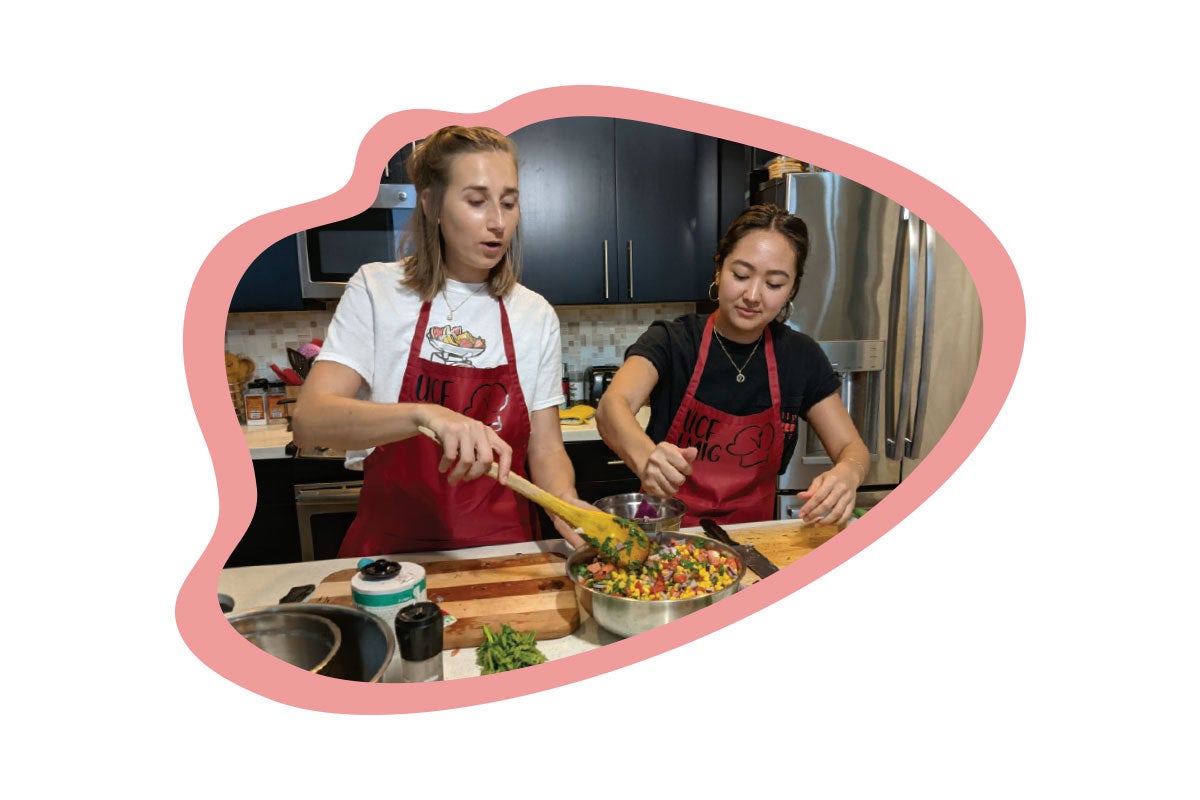
The ingredients made a roasted vegetable quinoa bowl and are in line with what scientists have discovered to be anti-inflammatory foods — those rich in omega-3 nutrients, antioxidants and phytonutrients — which have powerful anti-cancer and anti-heart disease benefits.
“Looking at ways to get more omega-3 fatty acids is very important and very beneficial for the brain,” says Wasserstrom.
Wasserstrom also practices at UCF Health in Lake Nona, where she advises patients on how to prevent, manage or reverse diseases with their diets — including eating a diet rich in whole, plant-based foods. In general, fruits and vegetables of all kinds, as well as nuts, seeds and legumes, are beneficial and linked to optimal health and wellness. That’s because our bodies know how to process the nutrients from these whole foods — their natural sugars, amino acids and fat — and turn them into good sources of energy.
Unprocessed meats are considered whole foods too, but they are recommended in smaller doses because of their lack of fiber and high saturated fat and cholesterol levels.
For Dupuis, educating others on diet is personal. In 2017, her father had quadruple bypass surgery — a procedure Dupuis describes as “pretty morbid.”
“He was your typical American male — ate what he wanted [and] considered ice cream a food group,” Dupuis says. “But when he went through the operation, as a family we said, ‘OK, we need to look at how to make changes to preserve the surgery he just had.’ ”
The Dupuis family adopted a plant-based diet, and her father lived another four years until he died of a stroke at age 60.
“My dad is the biggest reason I’m so passionate about this,” says Dupuis, who still eats a plant-based diet. “You can prevent vascular disease, and it’s 100% personal to me. If we had started making those changes sooner, maybe he’d still be here.”
Wasserstrom can attest to that; she has seen patients completely turn their health around. One woman, for instance, lost about 80 pounds and was able to ditch most of her diabetes medications after adopting a whole-food, plant-based diet and walking more.
“She kept coming in just to say how good she felt,” says Wasserstrom. “Her mind felt clearer. She was stronger. She wasn’t tired. She was just so invigorated.”
That’s the kind of change Dupuis wants to spearhead as a doctor. Already at the College of Medicine, she’s founded the Lifestyle Medicine Interest Group and has co-authored papers with Wasserstrom and other faculty about ways the College of Medicine has increasingly incorporated lifestyle medicine into the curriculum. Students have extracurricular activities thanks to the interest group, faculty members integrate lifestyle medicine teachings into their classes, and students can gain clinical experience alongside Wasserstrom — an American Board for Lifestyle Medicine certified practitioner — at UCF Health.
“People ask me, ‘Why do you want to go into primary care, a preventative-type health field?’ It’s literally because I think everyone deserves a chance,” says Dupuis.
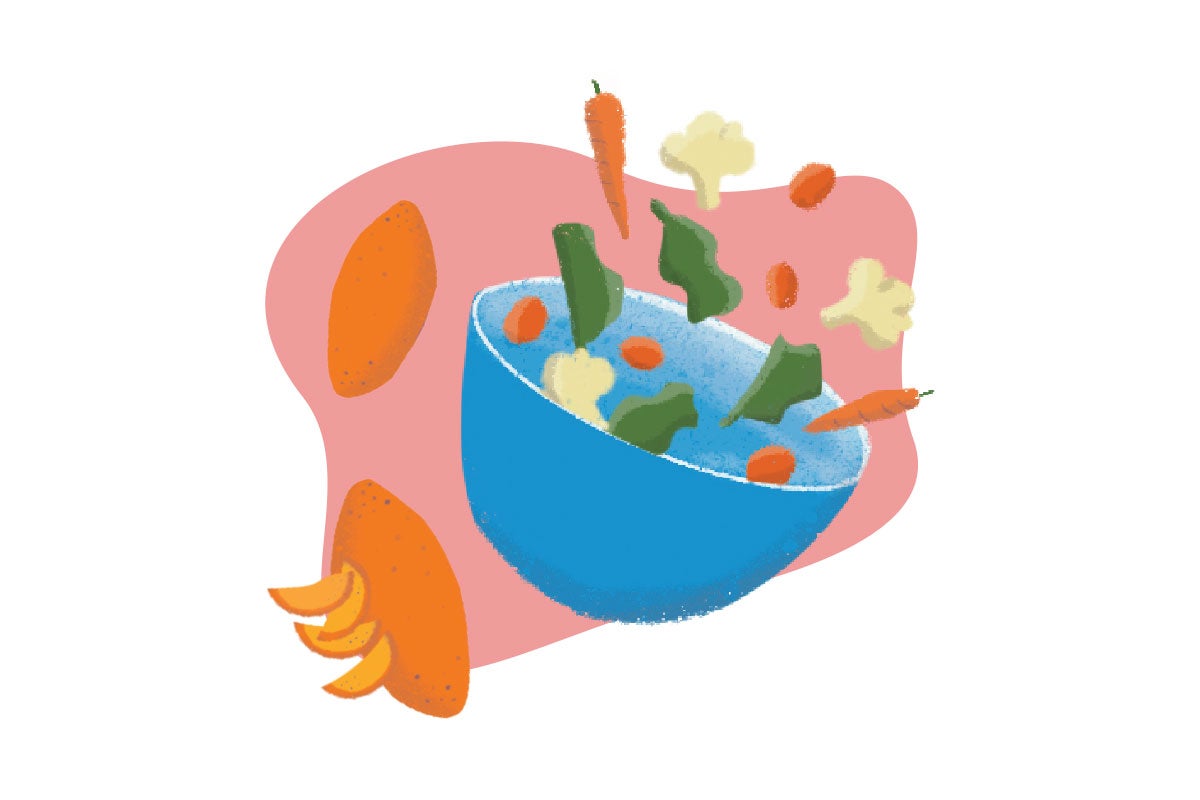
The Future of Food
Before moving to Florida more than three years ago, Wasserstrom practiced medicine in the Bronx. With Columbia University nearby, she enrolled in a Medical Nutrition for the Healthcare Professional course. She knew that eating healthy and exercising regularly were good, but she still didn’t know exactly what kind of food or what kind of exercise to advise her patients. To her surprise, neither did many of her classmates.
“People came from all over the country,” says Wasserstrom. “There was an OB-GYN, pediatricians, nurse practitioners — all kinds of healthcare professionals who felt they had more to learn about nutrition.”
That’s because the traditional healthcare curriculum does not spend enough time teaching nutrition, and research on lifestyle medicine and nutrition is still unfolding today.
Recent studies show that diets high in saturated fats are linked to a decline in memory, processing speed and attention. Likewise, studies show that diets high in saturated fats and trans fats are linked to a greater risk of cognitive decline and diseases like dementia and Alzheimer’s, says Wasserstrom. Baked goods, animal products and dairy products are where most of these fats are found in a standard American diet.
On the flip side, studies have found that diets high in monounsaturated fats, like what’s in avocado, nuts and seeds, are shown to improve brain function. Additional studies show that omega-3 fatty acids play a role in cognitive development and forming brain connections, and that patients with Alzheimer’s disease have a greater functional decline if they don’t have enough of them, says Wasserstrom.
On the flip side, studies have found that diets high in monounsaturated fats, like what’s in avocado, nuts and seeds, are shown to improve brain function.
Research also has shown there’s another omega nutrient to keep an eye on — omega-6, which has been found to trigger pro-inflammatory chemicals in the body. Not all omega-6 fats are bad — it’s recommended to have them in our diets, along with omega-3 nutrients — but a standard American diet has between 14 to 25 times more omega-6than omega-3 fatty acids, says Wasserstrom, which increases the risk of many chronic diseases prevalent in Western society. Omega-6 is commonly found in walnuts, peanut butter, meat, tofu, mayonnaise, and corn, soy, safflower and sunflower oils.
Still, there’s much to learn. Research is evolving on how diet can trigger epileptic seizures, and early findings suggest a keto diet may help those patients, says D’Amato- Kubiet. She is in the midst of her own research study that will compare how people’s eating habits in adolescence compare to adulthood. Dupuis also spent this summer researching the link between plant-based diets and hypertension.
Additional research is emerging thanks to a rise in group-based interventions, says Wasserstrom. For instance, support groups for people with the same conditions, such as diabetes, are growing in popularity. These groups allow patients to come together to learn what dietary and lifestyle changes they can take to better manage their condition. They also allow doctors and researchers to follow a bigger sample size of patients through their treatments and better understand what lifestyle changes make the biggest impact for the most people.
For the average consumer, it may seem like these disease-specific findings aren’t applicable, but Dupuis urges people to think otherwise.
“Young people don’t yet take pills every day, we don’t go to the doctor every other month. We aren’t seeing the consequences of what we’re doing today,” she says.
While there is still much to learn, D’Amato-Kubiet advises this for now: “If you can’t understand the ingredients, don’t buy it. If it has to go through more than one window, [such as with fast-food], it’s probably bad for you. And while grocery shopping, only shop on the outer perimeter of the store.”
“If you can’t understand the ingredients, don’t buy it. If it has to go through more than one window, [such as with fast-food], it’s probably bad for you. And while grocery shopping, only shop on the outer perimeter of the store.”
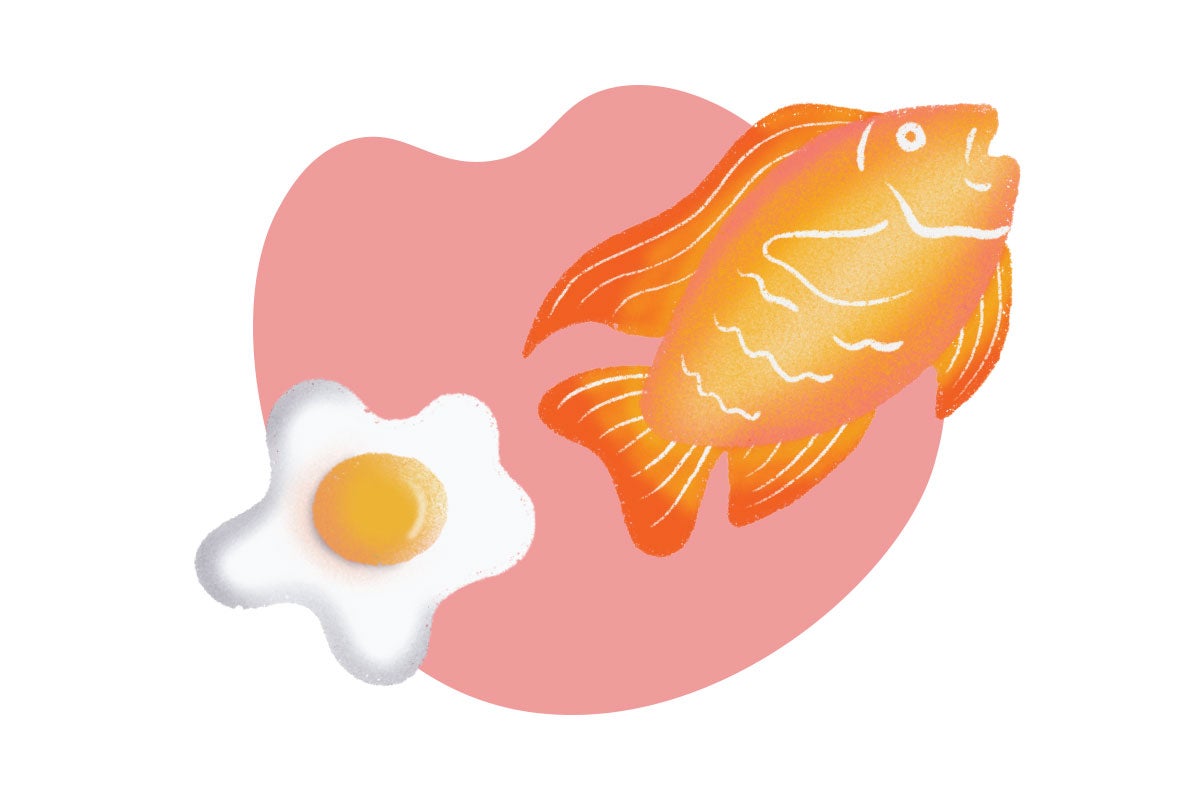
Roasted Vegetable Grain Bowl
A Lifestyle Medicine Interest Group recipe
INGREDIENTS:
1 cup quinoa, rinsed
2 sweet potatoes, peeled and cubed
1 whole head of cauliflower, cut into bite-sized florets
2 Tbsp. olive oil
1 can chickpeas
Garnishes (optional):
Sprinkle of toasted pepitas,
pickled red onions, cilantro leaves
Kale pepita pesto:
1/2 cup pepitas
2 garlic cloves
1 packed cup chopped kale
1 packed cup cilantro
1/4 cup lemon juice
1/2 tsp. salt
ground black pepper to taste
1/2 cup olive oil
1/2 tsp. maple syrup (or honey)
DIRECTIONS:
- Preheat oven to 425°F.
- Add rinsed quinoa and 1 3/4 cup of water to a medium pot. Bring it to a boil, cover, reduce heat, and simmer for 15 minutes. Remove from heat and let it sit, covered, for 10 more minutes. Fluff with a fork (very important — a spoon will smush your quinoa).
- Place sweet potatoes and cauliflower on large baking sheet. Drizzle the vegetables with olive oil and pinches of salt and pepper, toss to coat, then spread evenly onto the sheet. Roast for 20 to 25 minutes or until golden brown around the edges.
- Combine kale pepita pesto ingredients with 1/2 cup of water in a blender, and blend until smooth.
- Assemble bowls with a bed of greens, about 1/2 cup of quinoa, roasted vegetables, and about 1/4 cup chickpeas. Top with pickled red onions, pepitas and/or leftover cilantro. Drizzle the pesto sauce on top and enjoy!













